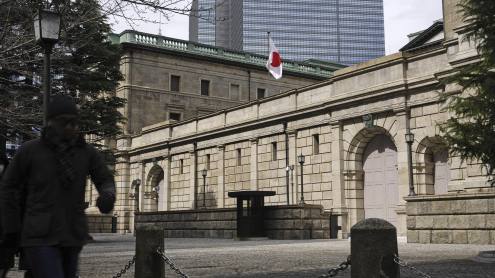How is it best to understand China’s economy? The immediate problem for China’s economic policymakers is like walking above a gorge on a rope bridge. If they lean too far to the (economic, not political) left, the economy will overheat. In addition to rising inflation, Chinese banks will be making more loans – new bank loans doubled during 2001-2003 (see Boom to bust cycles signal need for reform, page 95). Because many of these additional loans will go sour, the government will have a larger problem in restructuring the banking system in the future. If, instead, they lean too far to the right, the economy will slow down too much. Not only will unemployment and social unrest rise but also more borrowers will default on their loans more quickly. Again, the problem of restructuring the banking system becomes more formidable.
Currently, policymakers are pulling China’s economy back towards the right. They have raised reserve requirements on banks and imposed limits on banks’ ability to make loans to a broad range of borrowers. The government probably will accomplish its goal of easing growth to about 7% during the next year or two, from 9.1% in 2003 and 9.7% in the first quarter of 2004.
China’s modest slowdown will have a noticeable impact on the rest of the world. Removing marginal demand growth from China will cool off commodity prices. Export growth to China will slow and many countries will experience somewhat slower growth unless other sources of demand pick up.
Beyond the slowdown
Chinese policymakers should be able to use the slowdown to stay on the wobbly bridge. But what is the bridge and where does it end? For an economy like China’s, it is crucial not to be misled by institutional names. It is essential to examine the reality of functions. Government officials fret about the condition of banks in China. Yet, fundamentally, there are no banks: the country’s so-called banks are just another feature of the government’s fiscal policy.
The banks’ deposit liabilities are equal to about twice GDP. These deposits are the major way in which the government taps the high level of Chinese household savings – they are essentially government debt. And most bank assets are loans to government-owned businesses. The four largest banks are state-owned and guided by government policies to lend mostly to the large state-owned enterprises (SOEs) and to smaller banks. Local governments pressure the smaller banks to lend to favoured local businesses. New loans are made to repay old loans and businesses are not making timely payments on about half of these. Most of these so-called loans are government expenditures, as the government buys real investments, employment and a range of social services provided by the SOEs.
So the issue is not fragility of the banking system; it is sustainability of the government’s fiscal policy. China is the largest Keynesian economic-political experiment ever. The government is engaged in massive deficit spending, far more than the official deficit of 3%-4% of GDP. Unfortunately, much of the government expenditure (aka bank loans) is badly spent. One indication is sweeping overinvestment, with much of this undertaken by poorly performing SOEs. This is not quite digging holes and filling them in, but it is far from the best use of scarce resources.
Official government debt is about 30% of GDP. If the government assumes half of the deposits of the banking system, its debt is 130% of GDP and rising. The current path for China’s government debt is not sustainable.
Yes, there will be a slowdown in the Chinese economy in the next year or two. But policy makers and exporters need to focus on the crisis that is due in the next decade.
Thomas A. Pugel is Professor of Economics and Global Business at NYU Stern School of Business











